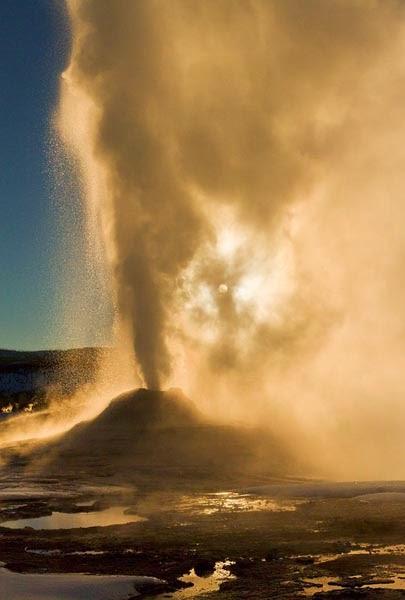
Lion Geyser, Yellowstone National Park
Last January, our friend Owen Floody went on a photo tour of Yellowstone National Park in Wyoming. Owen recently retired from a career of teaching and research at Bucknell University in Pennsylvania. He has always been an avid photographer and in his retirement has taken several trips that allow him to pursue his passion. Here is a short reflection on his Yellowstone trip and some of his excellent photographs.Once my photo tour at Canyon Village in Yellowstone National Park (see Part 1, May 12) was over, I spent most of another week exploring the two other areas in the park with winter accommodations, Old Faithful and Mammoth Hot Springs. I spent four nights at the Old Faithful Snow Lodge before traveling by snow coach to Mammoth, where I spent another two nights. Whereas travel by snow coach had been a focus in my time with Yellowstone Expeditions at Canyon Village, I traveled by foot at Old Faithful and Mammoth, supplemented by snowshoes on my one full day at Mammoth. (Snow coach tours were also available at Old Faithful and Mammoth.)

Resting Geyser
The thermal features at Old Faithful and Mammoth offer potential sources of heat to animals, especially bison and elk. In addition, they are sources of steam that envelops nearby vegetation when the wind is right. I came to Yellowstone hoping to photograph bison or elk hunkered down in or near a hot spring to combat the cold. I also hoped to see animals and plants encrusted in snow and ice, especially in the morning, after a night's exposure to the steam and cold.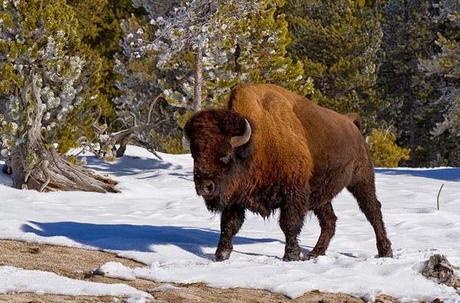
Warm bison
These hopes were realized only in part: The plants had no choice but to cooperate. But the temperatures during most of my visit were not sufficiently low to keep the animals near the hot springs. The one exception occurred early in my visit, when the temperatures were relatively low and we briefly shared the road with a snow-encrusted bison. I did see some bison at Old Faithful and Mammoth, but they looked positively toasty as they plodded majestically along.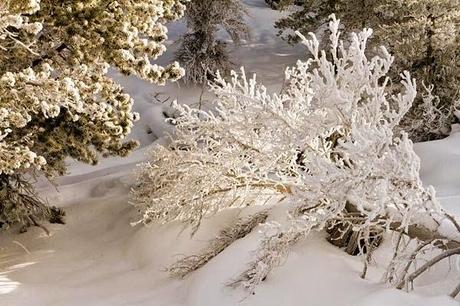
Icy Bush
So the emphasis was on landscapes, and even these had to be caught early in the morning, before the icy crusts on the trees and shrubs melted away. I typically would get out into the thermal fields before sunrise, to capture the best light and crusts. A late breakfast might have been possible, but I usually made do until lunch with a candy bar or piece of fruit. Hunger was never an issue as I had lots to distract and occupy me.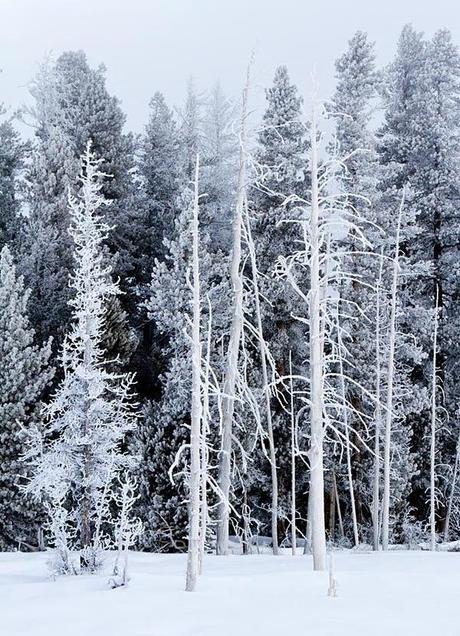
Icy Trees
Other photo opportunities appeared and disappeared as functions of cycles in thermal activity. At Old Faithful, some of the geysers adhere to predictable schedules displayed at the visitor's center. Though I caught some of these eruptions, I also was lucky to catch some unscheduled ones, some of which even coincided with the attractive light of the late afternoon.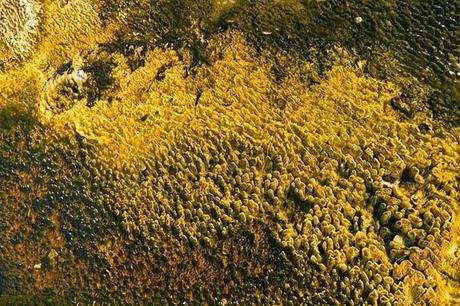
Thermal runoff
Finally, one of the joys of Old Faithful and Mammoth was the fact that one is constantly in the midst of hot springs and geysers. Many are colorful themselves, but what I may have enjoyed even more was the frequent riot of color in the streams bearing the runoff from these features. Some of these also present very unexpected and appealing textures. In some cases, it's hard to believe that you're out in Yellowstone in the winter rather than floating underwater, alongside a brightly colored tropical reef. In this environment, I was amazed often, bored never.